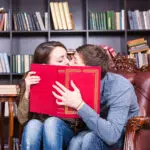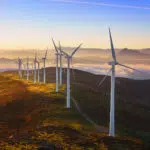Global Wind Day is celebrated on June 15 every year. It’s an international event to raise awareness regarding the importance of wind energy and the power it holds to change the world, improve energy systems, and decarbonize economies. Investing in wind energy means spending less money on fossil fuel imports, resulting in a smaller carbon footprint and minimized CO2 for cleaner air on our planet. On this day, we learn not just about how wind power leads to a greener planet, but also about job creation and employment opportunities for many people.
History of Global Wind Day
The history of wind energy as a power source traces back thousands of years. As early as 5,000 B.C., Egyptians had already been using wind power to propel their boats on the Nile River. This was improved upon by the Chinese in 200 B.C. as they invented wind-powered water pumps. Furthermore, people from the Middle East and Persia discovered windmills with woven-reed blades to grind grain with more speed and less manpower, which eventually led to more efficient food production.It wasn’t until the 1st century A.D. that Heron of Alexandria created the windwheel. According to historians, this was the first recorded wind-driven wheel to power a machine. It included a small windmill that powered a piston that forces air through the organ pipes. According to records, it made a sound like that of a flute.In the Middle Ages, windmills became a popular device in Pakistan, Afghanistan, and Iraq. They were used to pump water and grind sugarcane, which eventually boosted their grist milling industry. This technology was ultimately brought to Northwestern Europe in 1180 and became a popular tool to grind flour — a system that still exists up to date.In the late 1800s and early 1900s, colonists brought windmills to the United States. Homesteaders and ranchers installed thousands of water pumps and small wind-electric generations in Western America.The possibilities of wind power were further explored due to oil shortages in the 1970s. This forced everyone to find an alternative source of energy to generate electricity. Due to this scarcity, the U.S. federal government installed thousands of wind turbines in California to encourage the use of renewable energy sources. By 2020, the U.S. share of electricity generation via wind power grew to 8.4% — a huge spike compared to the 1990s 1%.
Global Wind Day timeline
Greek engineer Heron of Alexandria discovers the first wind-driven wheel that powers a machine.
Northwestern Europe uses vertical windmills to grind flour.
About 2,500 windmills in Denmark produce a combined power of 30 megawatts used to grind grains and pump water.
The global oil shortage leads people to explore wind energy in a more advanced manner to be an alternative to electricity.
The U.S. Federal Government installs thousands of wind turbines in California in support of renewable energy sources.
Global Wind Day FAQs
What are the types of wind energy?
The three main types of wind energy are utility-scale wind, offshore wind, and distributed wind.
What are four manufacturers in the world that uses wind turbines?
Vestas (Denmark), Siemens Gamesa (Spain), Goldwind (China), and General Electric (U.S.)
Which country uses the most wind power?
China uses the most wind power, generating approximately 236,402 megawatts in 2019 alone.
How to Observe Global Wind Day
-
Fly a kite outside
This may sound like a simple activity, but flying a kite outside is an effective way to explain to your kids how wind energy works. Discuss how wind power propels the kite to stay afloat in the air. It’s also a great bonding activity that’s both fun and educational.
-
Attend seminars about wind energy
In an era where the climate crisis is peaking, wind energy is the future. Attend seminars on Global Wind Day to learn about the benefits and new technologies of wind energy as an alternative power source. Educating yourself is key.
-
Take it to social media
Raise awareness about wind energy and its benefits on social media. Share scholarly articles or Global Wind Day event pages to your newsfeed. Use the hashtag #GlobalWindEnergy and keep your friends and family in the loop about one of the most pivotal solutions to decarbonizing the planet.
5 Interesting Facts About Wind Energy
-
The wind industry solves employment problems
The wind industry employs 650,000 people in different capacities around the world.
-
The first modern turbine
The first modern turbine was built in Vermont, U.S.
-
Commercial turbines are powerful
One commercial wind turbine can provide power to 600 homes.
-
The largest wind turbine
The largest wind turbine was created in Hawaii, which stands 20 stories tall and each blade is as long as a football field.
-
It doesn’t need water
Wind energy is the only power source that doesn’t need water.
Why Global Wind Day is Important
-
It’s for the good of the planet
With the rise of global warming and other crises, wind energy is one solution to help lessen pollutants. Its long-term effects are advantageous to the new generation and to the generations that will come after.
-
It raises awareness
People need to be proactive in highlighting the benefits of wind energy so that companies, governments, and other industries will adopt this technology as an alternative power source. The only way to make them proactive is to raise awareness. Education is key.
-
Wind energy is cost-effective
Global Wind Day helps us support the cost-effectiveness of wind energy. It’s one of the lowest-priced energy sources known today, which could potentially lower federal taxes.
Global Wind Day dates
| Year | Date | Day |
|---|---|---|
| 2023 | June 15 | Thursday |
| 2024 | June 15 | Saturday |
| 2025 | June 15 | Sunday |
| 2026 | June 15 | Monday |
| 2027 | June 15 | Tuesday |























